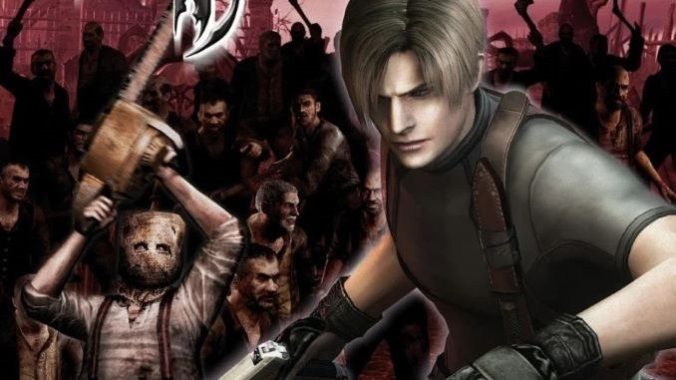
Almost any videogame can be scary. Who didn’t feel a tiny jolt of fear the first time they faced off against the Space Invaders or saw a goomba marching towards them? Personally I still count Sinistar as the most frightening character in games, with Evil Otto from Berzerk a close second—and he’s nothing but a big, bouncing smiley face. Anything that presents a challenge can be scary, and games are built around challenges. There’s certainly a maximalist definition to “horror game,” and although that’s one we might consider at other moments in time, it’s not what we’re looking at right now.
Look, it’s October. Halloween’s almost here. Like so many, we’ve got horror on the mind right now, and when it comes to games, we’re looking for the most pointedly and explicitly horrific. We want to play games that very much want to scare us—that exist primarily to do just that, and that do it with aplomb. From brutal gorefests, to tense stealth retreats, to brain-bending psychological fright, there’s no one way to terrify, and you’ll find all manner and style of frights in our list of the best horror games of all time. This list was assembled by a small handful of Paste editors and our current games intern, who between them have been getting gleefully spooked by videogames for over 40 years; no list is truly comprehensive, but this one is pretty damn close. No matter what kind of scares you’re looking to play through this Halloween, at least one of the games below should have you covered. And we start with one that helped pioneer the entire genre, one whose influence heavily outweighs its ability to scare a modern audience.
25. Haunted House
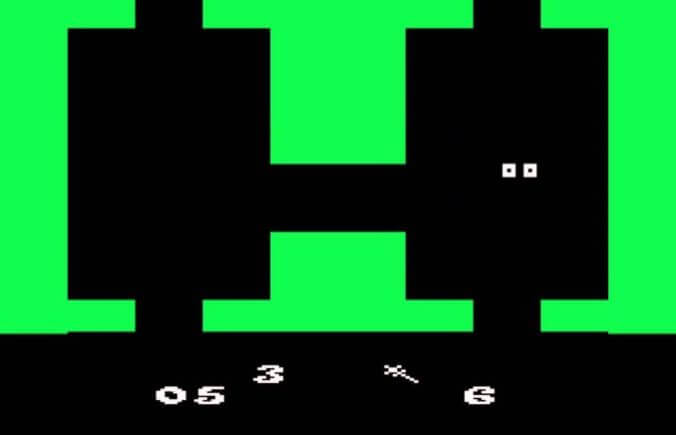
Developed By: Atari
Originally Released: 1982
Released in 1982, Atari’s Haunted House highlights the power of suggestion and the importance of tension within horror. Nothing about the game’s actual images are in any way scary, obviously—again, this was 1982, essentially still the cave painting era of games. The biggest arachnophobe in the world wouldn’t find anything to tremble about when the game’s tarantula comes crawling into the room. The consequences of that spider and the game’s other monsters made them frightening, though, along with the unpredictability of their appearances. Combined with the helplessness of our character, and the stark, shadowy layout of the haunted mansion, Haunted House conveyed the essential quality of horror despite its extreme technical limitations. It deserves respect if only as an influence on every game that has scared us since.—Garrett Martin
24. S.T.A.L.K.E.R.: Shadow of Chernobyl
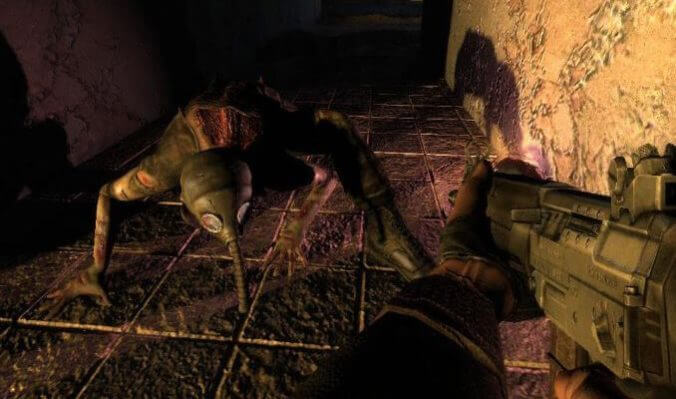
Developed By: GSC Game World
Originally Released: 2007
Yeah, they made a game based (very slightly, like, pretty much in name only) on Andrei Tarkovsky’s Stalker. Yeah, it’s brutal. S.T.A.L.K.E.R. takes ideas from that film and the book that it’s based on and combines them with the later real life tragedy of Chernobyl to fashion a spare, unrelenting first-person shooter about the devastation and long-term fallout of a nuclear disaster. It’s about as bleak and horrific as survival horror gets, and its influence can be seen not just in games (would the Metro series exist without it?) but in the larger rise of interest in Chernobyl over the last decade.—Garrett Martin
23. Doki Doki Literature Club
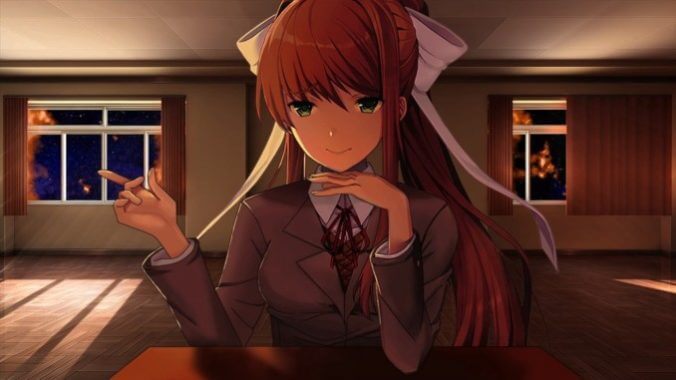
Developed By: Team Salvato
Originally Released: 2017
You might know what to expect from Doki Doki Literature Club all these years later, but that doesn’t make it any less freaky as fuck. A visual-novel-turned-meta-nightmare, Doki Doki remains more shocking than most of the other titles on this list. The lengths it’s willing to go to just to unsettle players is impressive, and it’s unmatched in sheer grossness and shock factor. Hell, there’s a reason “Just Monika” has remained part of the gaming lexicon for damn near five years at this point. If you’re looking for a creepy game to play over the course of one night, you really can’t go wrong with this descent into the maw of psychological horror dressed as a kawaii dating sim.—Moises Taveras
22. F.E.A.R.
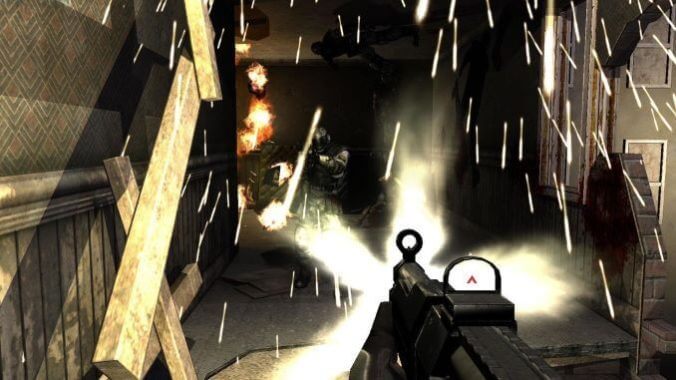
Developed By: Monolith Productions
Originally Released: 2005
Part action film, part Japanese horror, F.E.A.R. unites the fast-trigger thrill of a well-made military shooter with the creeping dread of a classic horror game. It’s not a combination that should necessarily work all that well—you expect shooters to be fast and chaotic with super soldier army man heroes, whereas horror is all about pacing, atmosphere, and depriving the character of power. The common element between the two genres is tension, though, and F.E.A.R. is absolutely full of it, especially whenever its resident spooky ghost girl Alma makes an appearance.—Garrett Martin
21. Left 4 Dead 2
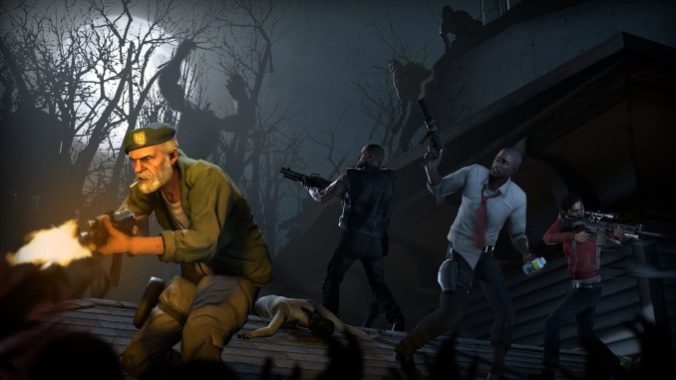
Developed By: Valve
Originally Released: 2009
It’s hard to separate Left 4 Dead from its predecessor: there was only a year between them, and despite new characters, a new mode, some new enemies and improved AI, 2 feels a lot like the original. And although I like it more (the Southern setting appeals to me, and although the humor loses some of its understated charm by making it more prominent, it’s still legitimately funny most of the time), the second game wasn’t as important or groundbreaking as the original. It was harder, though, which makes it scarier while also increasing the need for communication and tight teamwork, which in a way made Left 4 Dead 2 a better realization of what the first game was aiming for, and one of the best horror games of all time.—Garrett Martin
20. DOOM (1993)
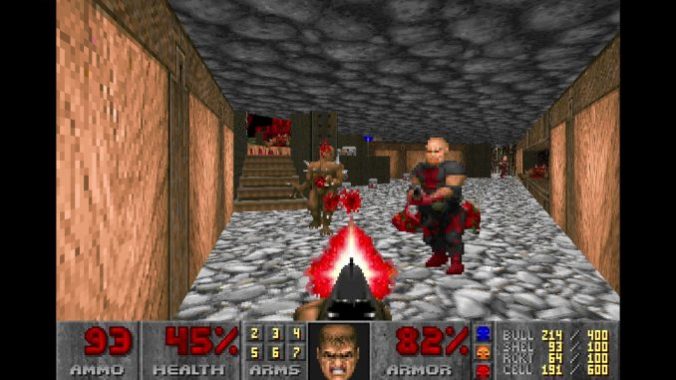
Developed By: iD Software
Originally Released: 1993
The run-and-gun demon shooter that spawned a hundred imitators, DOOM is obviously one of the most influential games ever made. John Carmack’s 3D engine was a big jump up from id Software’s Wolfenstein 3D from a year earlier, capable of rendering much more detailed and atmospheric settings that really captured the hellish horrors of the player’s descent. Put simply, many players simply weren’t ready for this kind of display of blasphemy and blood in 1993—even those who had played embryonic shooters like Wolfenstein 3D had never imagined they’d be taking on the legions of hell with a sawed-off shotgun in their hands. The demonic cast of DOOM are all instantly iconic, from the floating grin of the Cacodemon to the true fear experienced by the player in their first run-in with the spindly Spiderdemon. It may be difficult for a modern player to imagine, but a first experience with DOOM in the early 1990s was a white-knuckled thrill ride.—Jim Vorel
19. Bloodborne
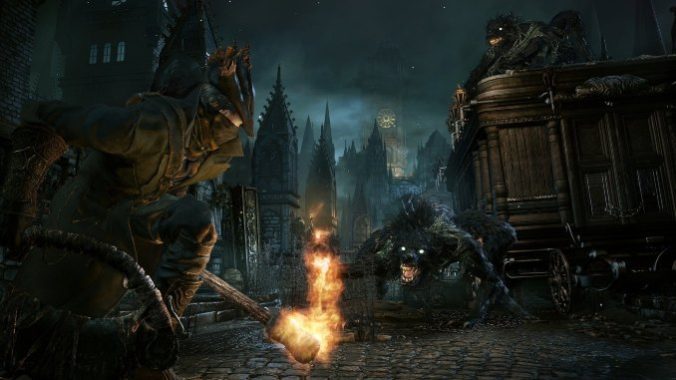
Developed By: From Software
Originally Released: 2015
I don’t really play many horror games. Personally I prefer films to subjecting myself to horrors I’ve got to live through. Bloodborne isn’t a traditional horror game, but it sure is horrifying to fight through, in a way From Software’s other games can’t quite match. The literal Nightmare Frontier aside, Bloodborne is host to men-made-beasts, celestial monstrosities, and other atrocities straight out of a bad dream. At one point, you fight a creature that may as well be the biblically accurate specter of death. Mostly, though, you spend a night in a town beset by plague and the failures of people, vividly realized as the abominations that stalk the blood-soaked streets and reduce their victims to viscera. Bloodborne utterly delights me in part because of how close I get to be to the imagery of unfettered terrors in a manner that doesn’t leave me entirely powerless. In Bloodborne, I get to triumph over the nightmares.—Moises Taveras
18. Dead Space

Developed By: EA Redwood Shores
Originally Released: 2008
While Resident Evil 4 effectively created the third-person-shooter and survival-horror hybrid, Dead Space riffed on this premise to grotesque success. Trapped on a derelict mining spaceship, it follows engineer Isaac Clarke as he tries to survive against fleshy monstrosities called Necromorphs. Existing at the intersection between schlock and genuine terror, the original Dead Space works as both an excellent action game and a legitimate successor to the survival-horror greats. Its diegetic UI and unrelenting scares (not even the load-screen hiding elevators were safe!) create a suffocating atmosphere, while its innovative “dismemberment system” force you to deliberately engage with unsettling monsters by carefully pruning their spastic limbs. It’s an action-horror classic that adopts the more player-empowering qualities of post-Resident Evil 4 titles while still putting tension first.—Elijah Gonzalez
17. Alan Wake
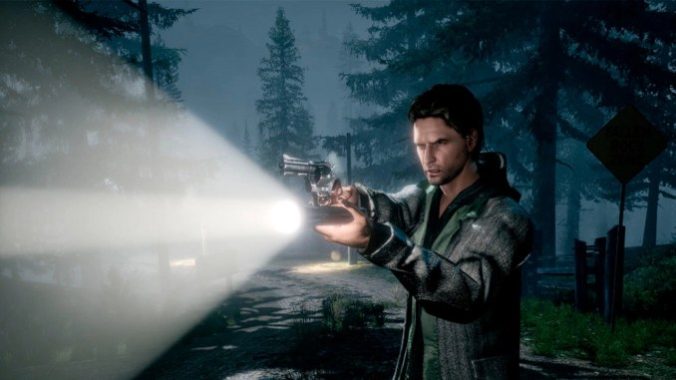
Developed By: Remedy
Originally Released: 2010
Remedy’s inspired homage to Twin Peaks and The Twilight Zone gets the pacing and presentation of a TV show just right. Its core metafictional concept (writer Alan Wake wars with his own inner darkness in a world created by his words) is bolstered by fantastic atmosphere, memorable secondary characters and the cliffhanger twists of a great TV mystery. It won’t necessarily terrify you in the way other games on this list might, but it’s probably the creepiest of them all, depending not on gore and jump scares but on unsettling ideas and the constant sense that everything is just slightly “off” enough to disorient you.—Garrett Martin
16. Until Dawn
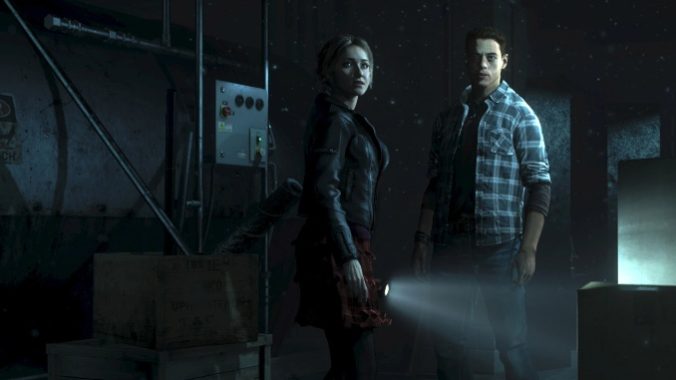
Developed By: Supermassive Games
Originally Released: 2015
Sometimes the best horror isn’t what’s scariest, but what’s most memorable. I’m a sucker for god schlock and/or camp, and Until Dawn delivers in abundance and has remained a fixture of my life since it came out. Though I didn’t play the game until recently, it’s been a tradition of sorts to watch playthroughs of it every spooky season for years now. There’s plenty of reasons why people love and cherish this game. It wrings phenomenal campy performances from its cast, who have always managed to secure my attention if not entirely my heart. Shoutouts are owed to Emily, who steals every scene she’s in, and Josh, who welcomes his friends back to the cabin where his sisters died a year prior and closes the invitation by saying “Let’s party like we’re fucking pornstars.” While I’m decidedly more mixed on the interactive drama as a genre in games lately, Until Dawn’s B-movie aspirations and mechanics keep the game light and fun, all the while providing enough jump scares and fun kills (if you manage to get the cast killed) that solidify its place in the horror game canon.—Moises Taveras
15. Bioshock
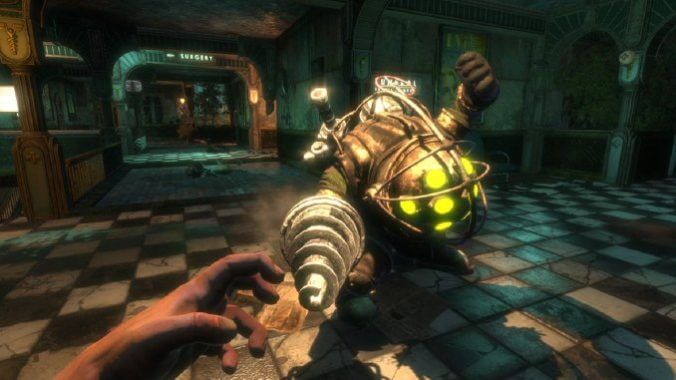
Developed By: Irrational Games
Originally Released: 2007
Bioshock was conceived as a spiritual successor to System Shock, and it faithfully transplants many of the iconic aspects of the series—the audio logs, the hacking, the light RPG elements, which here revolve around genetic manipulation in order to turn the player into an X-Men like mutant. It’s arguably the game’s first person shooting elements that took the biggest step forward, however, as Bioshock gifted players with an eclectic and creative suite of weapons and powers, allowing them to plan out their combat to take the greatest advantage of their environment. Its horror elements, meanwhile, are aided greatly by inspired production design and painterly sequences that play with elements of sound and shadow, often resulting in the player creeping up on a terrifying scene already in progress. The voice acting, likewise, is some of the genre’s most instantly iconic—if you’ve played Bioshock, then surely you’ll be able to hear the voices of the Little Sisters in your head for decades to come.—Jim Vorel
14. Alien: Isolation
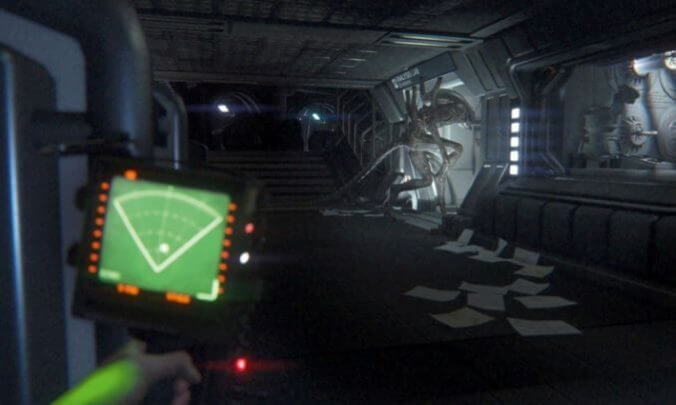
Developed By: Creative Assembly
Originally Released: 2014
If you’re going to make a primarily stealth-based game that riffs on a beloved horror movie, you have a lot to choose from, including Halloween, Friday the 13th, and A Nightmare on Elm Street, among others. Those movies have their games, sure, but none are as strongly realized or perfectly adapted as Alien: Isolation, which targets the claustrophobic terror of Ridley Scott’s original film over the guns a-blazin’ militarism of James Cameron’s sequel. The tension in Alien: Isolation can be overwhelming; when you’re stuck inside a locker with an almost unstoppable xenomorph slinking around just outside, you’re liable to want to put the controller down and just walk away from your TV. If you can handle that constant sense of dread, you’ll find it’s essentially a very complex, very frightening puzzle game, and one that’s far more exhilarating than, say, Klax or Columns. Just be aware of what you’re strapping in for when you first load it up.—Garrett Martin
13. Inside
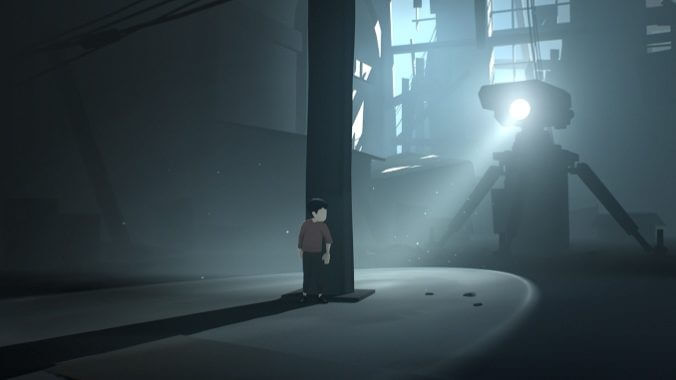
Developed By: Playdead
Originally Released: 2016
The thing about good horror—the best horror, even—is that it sticks with you. Whether it’s the soundscape or the imagery, the shock of a good jump scare or the composition of a scene, horror loves finding ways to worm its way into your brain and keep you up at night. I haven’t played Inside since the one and only time I did, but the events that transpire in it have stuck with me ever since. The overwhelming shock wave atrium, the zombie procession in the city, the deep dive into darkness, the horror of the final sequence: All of it has haunted me in some way for years since. That’s why it’s one of the best horror games ever.—Moises Taveras
12. Eternal Darkness: Sanity’s Requiem
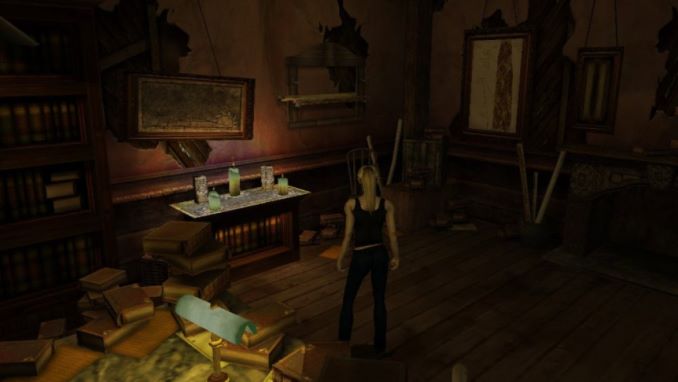
Developed By: Silicon Knights
Originally Released: 2002
This history-hopping adventure about shambling Lovecraftian whatsises has never made it off of the GameCube, which is a true shame; it’s a genuinely terrifying piece of work that touches on several different corners of the horror genre while telling a millennia-spanning story of uncommon depth. If you ever wondered why game designer Denis Dyack and the studio Silicon Knights were once widely respected before their embarrassing fall from grace, this is the reason. With Eternal Darkness they made a game that told a compelling, cohesive story across a range of historical settings, while introducing a unique combat system build around spell-casting combos. The cherry on top were the vaunted “Sanity Effects,” which played increasingly ingenious and meta tricks on the player as their character’s sanity meter depleted. Anybody who’s played Eternal Darkness won’t forget the first time they encountered a fake ending or their TV screen went black with a hoax error message. Eternal Darkness is a true epic of the horror genre, and hopefully one that will become more accessible to all those who missed it on the GameCube.—Garrett Martin
11. System Shock 2
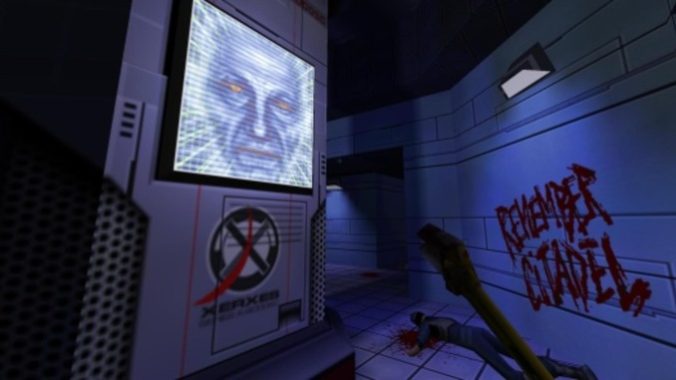
Developed By: Irrational Games; Looking Glass Studios
Originally Released: 1999
A startlingly creative fusion of genres, System Shock 2 thrust both first person shooters and the horror genre forward into new, uncharted territory in 1999. Although the likes of Half-Life had combined some of the same science fiction-inflected horror elements with classic shooting, System Shock 2 is a far more complex creation, seemingly compelled to introduce as many new gameplay elements as possible. Its RPG elements feel like a clear influence on the likes of Deus Ex, while the hacking system would be a key component of Bioshock. Even the insane A.I. of Portal is deeply indebted to System Shock 2 and its rampaging, megalomaniacal A.I. SHODAN. As a game truly dedicated to immersion of the player in a deeply atmospheric, creepy setting System Shock 2 gets the very most out of audio logs and voice acting in particular, bringing its crypt-like spacecraft to life.—Jim Vorel
10. Resident Evil 2
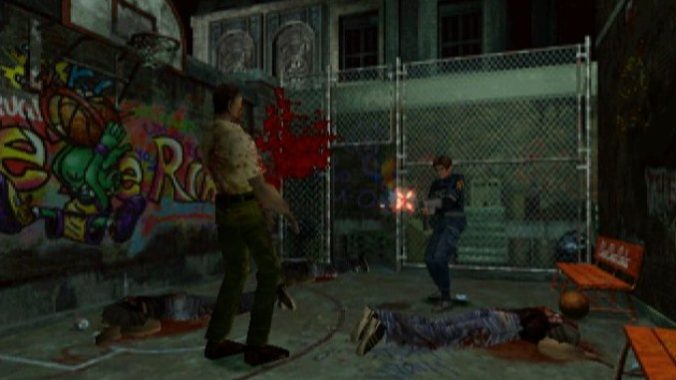
Developed By: Capcom
Originally Released: 1998
The first Resident Evil was dripping with atmosphere, even if it happens to feature a legendarily clunky UI and clumsy voice acting that came to be considered a trope of the series itself. Resident Evil 2, on the other hand, improves upon the core gameplay established in the original, with better controls and a far more expansive setting. Whereas the first game confined players in the mansion and its attached facilities, the sequel is our first opportunity to see just how bad the T-Virus infection has become in the outside world. And like the first entry in the series, the game accomplishes this by dropping the player straight into the action with little preamble, throwing one right into the fight for survival. These early sequences are actually among the game’s best, as the player lacks the means to fight many of the enemies and must simply run for their life until more of the story starts to be revealed. And in true Resident Evil fashion, the game plays host to some iconic monster introductions—perhaps most notably, the first arrival of a Licker, which surely served as late ‘90s nightmare fuel for the PlayStation era.—Jim Vorel
9. Anatomy
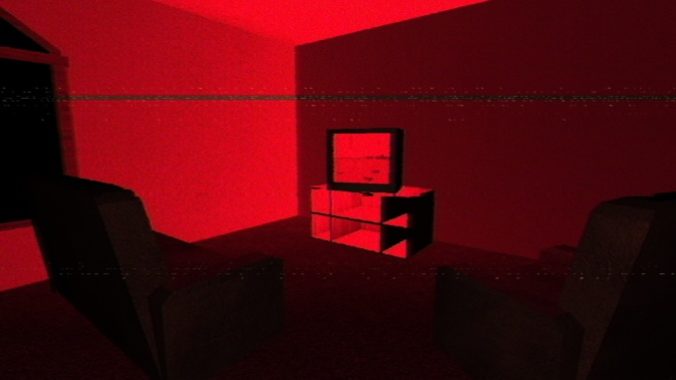
Developed By: Kitty Horrorshow
Originally Released: 2016
Anatomy is a masterclass in slow-build horror. Trapped in a dark but initially unremarkable house, you are tasked with finding a series of cassette tapes placed throughout. But instead of consoling, these audio logs build towards grim revelations. The icy voice that rings out over the cassette player turns what was once a relatively normal space into something else, leaving you convinced that an awful fate awaits as you explore the bedroom, the kitchen, or the basement, low-poly halls morphing from indifferent to hateful. But most chilling of all are its ideas, and as the narrator of these tapes reaches their thesis, it calls the sanctity of the home into question. It’s rare for a work of fiction to undermine basic assumptions of safety, but Anatomy manages to coil up in your subconscious as only the best works can.—Elijah Gonzalez
8. The Last of Us
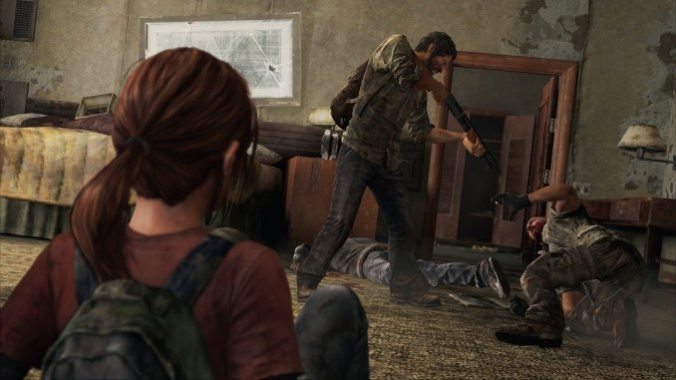
Developed By: Naughty Dog
Originally Released: 2013
Compared to Naughty Dog’s other big franchise, Uncharted, The Last of Us goes beyond its post-apocalyptic plant-zombie setting by inflicting players with something far worse: Helplessness. You’re not going to be Nathan Drake, swinging around ruins and murdering hundreds of mercenaries. You’re going to be sneaking for your life. The Last of Us takes from a few established undead fictions, ramping up tension with hushed environmental sound and complex light, then inflicting us with 28 Days Later-like terror if we screw something up. If you’re teaching us to choose our movements wisely, scaring the bejeezus out of us is an effective technique. But The Last of Us truly frightens because beyond the Clickers and the dreaded ladder puzzles, there are remnants of humanity far scarier and more relatable than we’d like to imagine—but all too easy to believe. Hiding from the infected is scary, but hiding from your fellow survivors is harrowing. Some games on this list affect us by being inscrutable, truly horrific. The Last of Us, with its sharply written characters and well-realized world, gets under our skin by being terribly real.—Jacob Oller
7. The Walking Dead
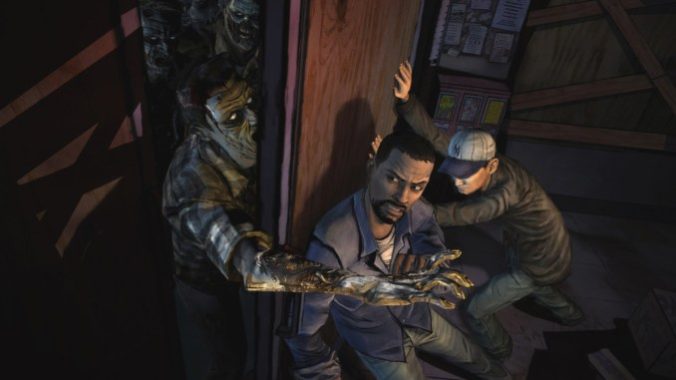
Developed By: Telltale Games
Originally Released: 2012
Telltale’s The Walking Dead? Everyone liked that. With storytelling so exciting that it rarely felt ridiculous for its choices to be in quicktime events, the comic-like adventure was scariest because of the sheer weight of its consequences. Nesting decision trees and conversational flowcharts aren’t inherently spooky, but The Walking Dead excels at engrossing you so deeply in its characters that the idea of losing someone—or even making someone unhappy—wracked you with guilt. It’s also inevitable. You can’t please everyone all of the time, and when you’re trying to survive a zombie apocalypse, everyone starts from a baseline of “pretty pissed off.” One of Telltale’s best ideas was collecting data on how people played through the game: As you continue through, you get to see how others suffered through its impossible choices. There’s camaraderie there, and your heart goes out to the poor bastards that messed up worse than you, but there’s also an overwhelming sense of dread. More hard times are coming, and you and the rest of the player base will have to see them through together. But your characters, your survivors, don’t know that it’s by your hand that they may not make it.—Jacob Oller
6. Outlast
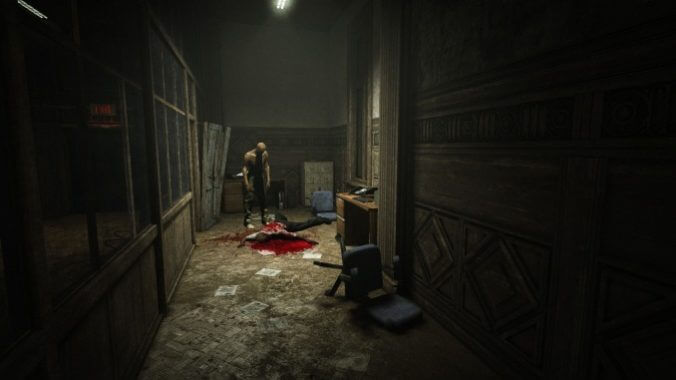
Developed By: Red Barrels
Originally Released: 2013
When it comes to sheer terror, few horror games can outdo Outlast. Part of that is the abject powerlessness of your character, a journalist investigating an abandoned mental hospital chock full of people who want to kill you. (Outlast is, uh, not particularly empathetic towards the mentally ill, which might understandably be a problem for many potential players.) Like Alien: Isolation, the goal is to stay undetected for as long as possible, and then to outrun or hide from any would-be murderers hunting you down. For most of the game your screen will look like the night vision setting on a camcorder; between that instantly recognizable POV (it’s like playing a found footage horror movie) and exceptional audio design, Outlast’s presentation is more notable than its actual story or scares.—Garrett Martin
5. Resident Evil 4
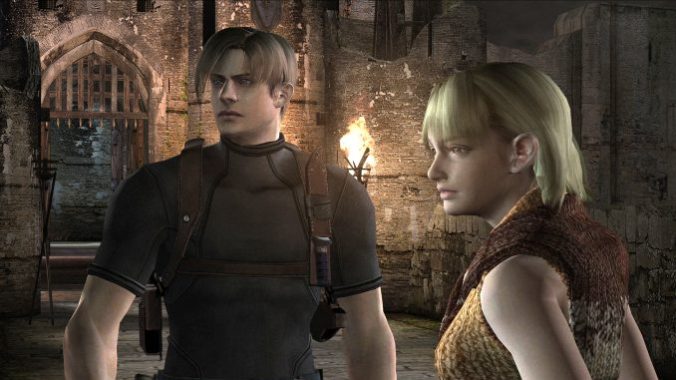
Developed By: Capcom
Originally Released: 2005
Videogames almost always empower the player. The survival horror genre twisted that on its head, explicitly depriving the player of the kind of power and possibilities they expected from videogames. That essentially limited their potential audience; as hugely popular as the original Resident Evil and its first few sequels were, there was still a large chunk of the gaming audience that avoided them due to how harsh and restrictive they felt. (Hi, nice to meet you.) Resident Evil 4 directly addressed those concerns with a greater focus on action without sacrificing any of the scares. It still limited resources like ammunition and health-restoring herbs (the Tetris-like minigame of fitting items into your briefcase remains an inspired little digression), but not as strictly as before, and created a common ground between survival horror and action games that generally pleased long-term fans of the former while welcoming in new players who struggled to enjoy the earlier games in the series. For a decade this was the perfect introduction to survival horror, and the recent remake has helped it reclaim that status.—Garrett Martin
4. Silent Hill
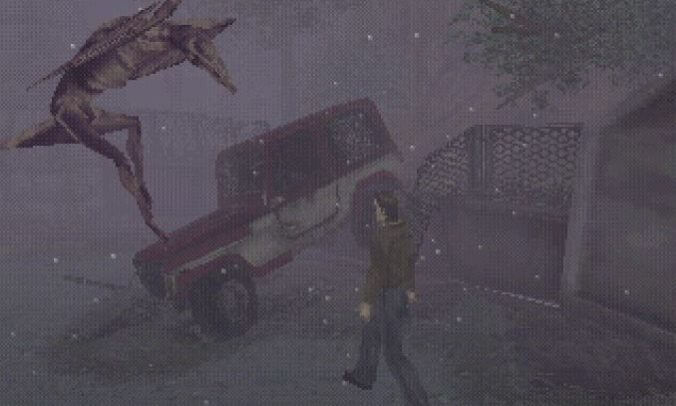
Developed By: Team Silent
Originally Released: 1999
Silent Hill and Resident Evil are the two titans of horror games, and although Evil came first by a few years, they have a lot in common. They’re both from legacy Japanese developers that were hugely responsible for the NES’s popularity in America (Capcom gave us both Mega Man and Resident Evil, whereas Konami gave us both Castlevania and Silent Hill). Both recognized that the gaming audience had aged alongside the medium as a whole—that the kids who watched Mega Man and Simon Belmont team up on Captain N in 1989 were, by the late ‘90s, young adults looking for PlayStation games that spoke to their maturity level. The difference between the two is that Resident Evil wants to scare you viscerally with monsters and jump scares, whereas from the start Silent Hill was a more psychological beast that aimed to unsettle in other ways. With its third-person perspective and bits of combat Silent Hill might look more action-packed than it actually is; what matters here is your ability to think through the game’s puzzles while handling the shocking and disturbing story beats that unfold along the way. In Silent Hill it’s not necessarily what happens to you or what you have to react to that leaves you scared and dazed; it’s what you see and what you have to live with having seen.—Garrett Martin
3. Amnesia: The Dark Descent
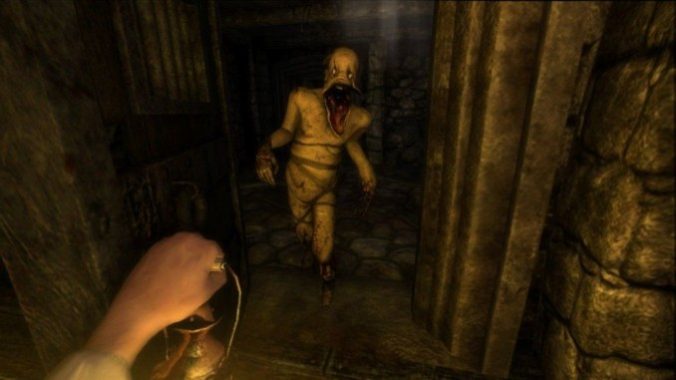
Developed By: Frictional Games
Originally Released: 2010
Only one game has ever made me yell in the comfort of my own home, and it’s Amnesia: The Dark Descent. An adventure game that punishes you for simply continuing to exist in its haunted castle, Amnesia drains your sanity with every step you take. That means each moment is scarier than the next, and each encounter with its monsters, hallucinations, and dark corners accelerates the process of seeing more. It’s a slippery slope down to the madhouse. That could feel unfair, or exhausting, if the game wasn’t so compelling. But searching through the castle and solving its puzzles keeps you going, if only to figure out something about what’s chasing, chasing, chasing you. Your inability to ever truly escape keeps your heart rate up; a section traipsing through a flooded corridor will keep you up at night.—Jacob Oller
2. Resident Evil (2002)
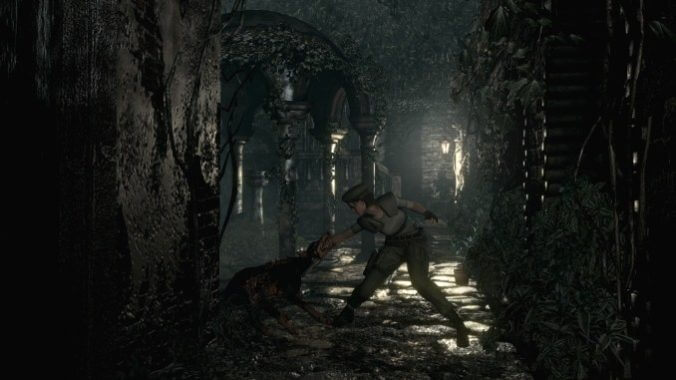
Developed By: Capcom
Originally Released: 2002
Although the 2002 GameCube remake of Resident Evil wasn’t technically the last fixed-camera angle horror game Capcom put out, it was arguably the high-point and dying hurrah of this style before Resident Evil 4 changed the genre entirely. 20 years later, this remake still retains its potency. While it partially modernizes the tank controls of its predecessors, it keeps the evocative and claustrophobic camera angles of early survival-horror titles, wresting power from the player to ratchet up a sense of helplessness. Its scares range from expertly crafted subversions that play with expectations to organic scream-inducing turns that extend from its game design. The most deliciously evil inclusion are the Crimson Heads. While you’re backtracking, any previously defeated zombies that haven’t been burned or beheaded will eventually randomly revive in a more vicious state, meaning even places you’ve cleared aren’t safe. Additionally, exploring the mazelike halls of Spencer Mansion channels the satisfying sense of discovery that comes from the genre’s adventure game roots, the curiosity of what lies in the next room just barely beating out well-deserved fears. Despite its age, Resident Evil (2002) is still as good as the series has ever been.—Elijah Gonzalez
1. Silent Hill 2
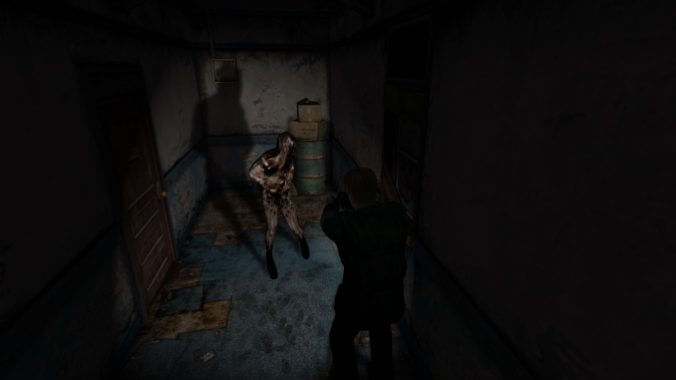
Developed By: Team Silent
Originally Released: 2001
Few horror games loom as large as Silent Hill 2, and for a good reason. Through its stilted dialogue, awkward performances, and bizarre sights, it is a surreal waking nightmare. We follow James Sunderland, a confused and oddly inexpressive man looking for his previously deceased wife in the town of Silent Hill. From its opening minutes, the central mystery of James’ quest burrows into the mind, odd inconsistencies and strange encounters casting doubt over what’s happening and why. And as these questions unfurl, the mundane details of this small-town bleed into a personal hell, unsettling imagery gaining additional significance as its symbolism becomes clear. This is perhaps the game’s greatest trick, how it manages to balance its layers of metaphor with every shade of genre thrills, from gross-out gore to psychological dread. While you may not be thinking about “what it all means” as a pyramid-headed monster chases you with a hulking metal clever, its sickening reveals hit with the same impact as its flailing creatures. Silent Hill 2 earns its place as perhaps the best horror game ever made through its brilliantly alienating touches, well-considered metaphor, nerve-wracking sequences, and most importantly, how it deftly weaves these elements together.—Elijah Gonzalez